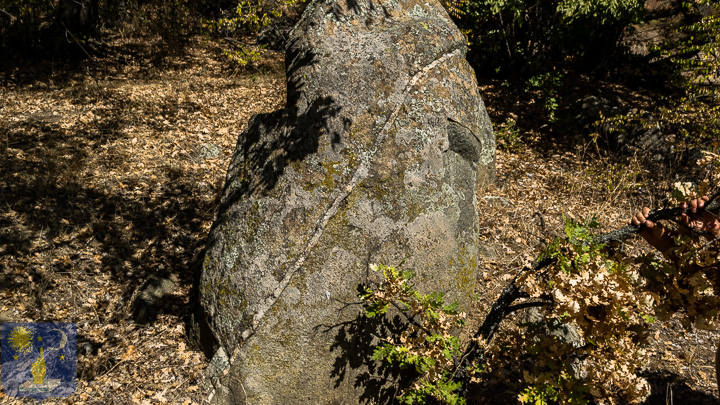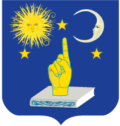The methodology is one of an open mind and an open heart.
I take in all sources of information. From scientific research to YouTube documentaries and see how they match with what I see on the ground at the megalithic sites of Bulgaria.
All sources have value. And I assess them both with a clear head and a clean heart.
Different sources can be contradictory and complementary. Some parts can have value and others less. And the parts from different sources can fit together.

Whilst I do not pretend to have complete and precise answers to all the questions that arise from the presence of these megalithic sites I think and feel my way through the questions to unravel the answers.
Many of the ideas I present are meant as springboards for others to verify or deny and develop new ideas. Most importantly we have to be tolerant of different opinions as they are just different perspectives on the matter. We need to remember that we actually can and not know the truth.
To formulate my ideas on the pyramids and answer the fundamental questions WHEN were the pyramids built, WHO built them, WHY and HOW I have used a wide variety of sources:
Research done at other megalithic sites around the world that have received more attention such as the Giza Pyramids, Stonehenge, Gobelkli Tepe and Machu Picchu have helped me compare to the findings of what we see on the ground in Bulgaria.
This includes archaeological, paleontological and geological scientific research. And yet many of the conclusions of this research is based on an interpretation of the elements found in situ at these sites.The results of this scientific research are based on theories which include many assumptions. It does not mean that they are wrong and should be cast aside. But they should be assessed for what they are: a narrow view of the facts. They are one perspective of matter which is used like a weapon to deny other interpretations. And repeating theories even a million times does not make them True.
Also we have to keep in mind that nobody has lived to tell the unbiased tale of life at the time of the early Egyptian dynasties or the Incas or the Neanderthals. The ancient Greeks and Romans had a biased view, as much as we do. That’s why we keep on rewriting history.
For example the few words written by Plato on Atlantis is a report presented 9 000 (nine thousand years!) after the events. Taking Plato’s word as an accurate and reliable account is like us pretending to know in depth about the lives, thoughts and feelings of the Neanderthals as reported through hearsay and stories passed down through the ages. And yet we cannot also dismiss Plato’s report, we just have to give it its right value in relation to other sources.
The fact is that brain-led scientific research has not been able to answer the fundamental questions:
-
Why are these megaliths here?
Why are the biggest ones the oldest as we find them underneath the smaller ones?
How did they do it?
How did they understand and reproduce the layout of constellations, planetary movements and Earth’s position and measurements?
Where did their knowledge of astronomy, mathematics and architecture come from?
How come they understood the Golden Number?
What effective tools did they have at their disposal to create such huge and so numerous megaliths?
For over a century scientists have measured these sites and drawn parallels with mathematical, astronomical and natural occurrences but has never been able to answer convincingly why and how and also by consequence who and when.
The historical approach to answering these questions has been truly unscientific in the sense that one theory is pushed forward as the truth. And its validation is achieved by getting as many highbrow yes-men to repeat it as many times as possible whilst ridiculing any dissidents. And this dictatorial, ego-led approach is pressed hard until the truth is revealed as a lie.
An alternative approach that gives credit to where scientific methods are valid and useful whilst going beyond to find the answers to the fundamental questions is the spiritual scientific method of Rudolf Steiner. Using both our brain and our heart is the way forward. It is a tolerant and inclusive approach that fits in with our age.
It is the multiplication of sources, methods and interpreters that will help us collect the Truth. Both the scientists and the uninitiated should participate in the process. Scientists have knowledge that can be blinding, whilst the uninitiated have the benefit of innocence and spontaneity, a pure heart.
The Truth will be elucidated through tolerance and sharing perspectives on the matter. And as many people as possible should participate in the process.
An important avenue of investigation is to feel our way through the questions and answers. If we ask the stones we will get answers. We just need to listen. Just being in close proximity to the stones brings up feelings that we can interpret with the right frame of mind and an open heart.
Observation
A large part of the analysis is based on the observation of the megalithic sites and the stones. It is as useful to have background knowledge of ancient history as it is to wipe the slate clean and forget what we know to see truely what is before our eyes. Knowledge can cloud vision like an eclipse of the Sun.
Both knowledge and clairvoyance are important and both should be used equally. And this is what I have done to reach the conclusions on When, Who, Why and How the pyramids of Bulgaria were built.
Criteria
Listening carefully to what the megalithic sites of Bulgaria are saying has led me to classify each site based on its location, position and the shape and composition of its stones.
The location tells us that the megalithic sites are not built individually. They form a network, a connected grid.
The position of the pyramids tells us about the influence of the Sun and planets as well as conditions on Earth when they were built.
The shape of the stones is an expression of the art of the pyramid builders. It tells us who they are and where did the original impulse come from to build so many and massive megalithic structures.
The composition of the stones tell us about the purpose of these sites and helps us understand why they built them.
Connections
Knowledge is in part used to build connections with other megalith building cultures throughout the world and there are many. It is clear that the pyramid builders were not living in isolated communities. They shared a global culture and more importantly they shared in an epoch of human consciousness that radiated across Earth.
We can learn from findings in other regions of the world and the analysis and conclusions of other researchers. Again we have to be tolerant of new and sometimes off-the-wall interpretations as in truth we do not know the full story of the ancient origins of humanity.
